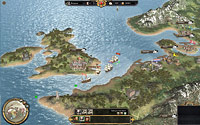- Übersicht
- East India Company
- Pirate Bay
- Privateer
- Designer's Cut
- Battle of Trafalgar
- Collection
- Die Schiffstypen
- Entwickler-Blog
- Videotagebucheinträge
- Modding-Anleitungs-Serie
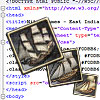 09 Oktober 2009:
09 Oktober 2009:Modding Teil 6.
This time we learn how to translate the East India Company to your own language.
Weiterlesen » 15 Juli 2009:
15 Juli 2009:Naval warfare, part II.
Lead designer Kim Soares takes the helm of a frigate and shouts: "Port side, FIRE!"
Weiterlesen »
 Halten Sie sich über East India Company auf dem Laufenden: Abonnieren Sie den Newsletter. (Nur in Englisch)
Halten Sie sich über East India Company auf dem Laufenden: Abonnieren Sie den Newsletter. (Nur in Englisch)
E-Mail-Adresse:
 Abonnieren Sie jetzt den Paradox-Newsletter und erhalten Sie alle aktuelle Informationen von Paradox Interactive (Nur in Englisch).
Abonnieren Sie jetzt den Paradox-Newsletter und erhalten Sie alle aktuelle Informationen von Paradox Interactive (Nur in Englisch).
E-Mail-Adresse:
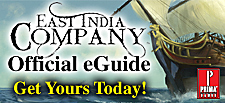
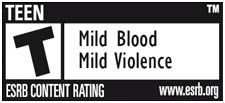
Designer's Blog: Trip down memory lane
My first console was one of these things that you just hooked up to your TV. I can't remember what it was, as I was
only five at the time. There was Pong on it that I remember. Probably it was
Atari 2600.

Atari 2600 was my first game console. At least I think it was.
My friend had Videopac that had games
with stunning graphics - I mean colors and objects made out of more than 3 pixels. Air-Sea War: Battle was maybe
my favorite.
After that, it was the usual story: C-64, Amiga 500 and eventually my first PC. I never went back to consoles after my
first one, until Playstation 2. I did have loads of
Nintendo Game&Watch electronic games.
My first brush with game design was the Star Wars RPG my best friend and I "designed" when we were about ten years old
or so. At the time, we didn't know that what we had created was a roleplaying game because in the 1980's there wasn't
any real knowledge of RPG's in Finland. My friend's friend had been in the US and told us there were these strange games
that had no board or cards, but you could be Luke Skywalker or Han Solo or anyone.
Soon after I read William Sleator's great science fiction novel
Interstellar Pig. In the book there
was a board game with aliens and stuff. I just had to design it for real and make my friends play it. I think they
weren't as enthusiastic about it as I was.
Roleplaying boomed in Finland in the 1990's and I dived right in. The first RPG I bought was
MERP. I was in 7th grade and my English skills were
quite insufficient to read the rules. Luckily some classmates had learned how to play it to some extent and we just
sort of made up the bits we didn't understand.
D&D was the first RPG translated into Finnish but I waited for the Finnish version of Runequest.
From there, our group of friends tried out any system that seemed interesting: Warhammer FRP, Cyberpunk, Cthulhu,
Rolemaster, Harnmaster, 2300 AD, AD&D... Board games like Talisman, Heroquest and Space Hulk
also saw a lot of action. And the original Magic the Gathering, naturally.
Learn by playing
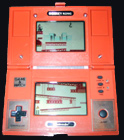 The good thing about pen-and-paper RPG's and board games is that all the game rules and mechanics are exposed. In my
opinion, you can learn a lot about how games work by playing these kinds of games. After all, games are just a bunch
of arbitrary rules. What I find intriguing is how combining different rules and options together, you can create
something that people find enjoyable, entertaining and fun.
The good thing about pen-and-paper RPG's and board games is that all the game rules and mechanics are exposed. In my
opinion, you can learn a lot about how games work by playing these kinds of games. After all, games are just a bunch
of arbitrary rules. What I find intriguing is how combining different rules and options together, you can create
something that people find enjoyable, entertaining and fun.
During the era of C-64 and Amiga, I think piracy was much more commonplace than today. Not that we kids ever regarded
copying games as illegal. It was just something that everybody did and non-existent copy protection made it all too easy.
Maybe it was partly because copied games that had no manuals, but trying to figure out the game mechanics was (to me)
as entertaining as playing the game itself. I especially remember
Captain Blood. That was a
complex game to begin with.
I spent thousands of hours on games like Fairy Tale, Elite, Civilization, Panzer General, Warhead, Fallout, Steel
Panthers, Ultima III, Wings, Doom, Laser Squad, Nethack, Master of Magic, Warlords and War in Middle-Earth
just to name the ones that instantly come to mind.
As a game designer, I find vast experience with different kinds of games an invaluable asset. Anyone that is interested
in game development as a future profession should play, play and play!
Kim Soares







